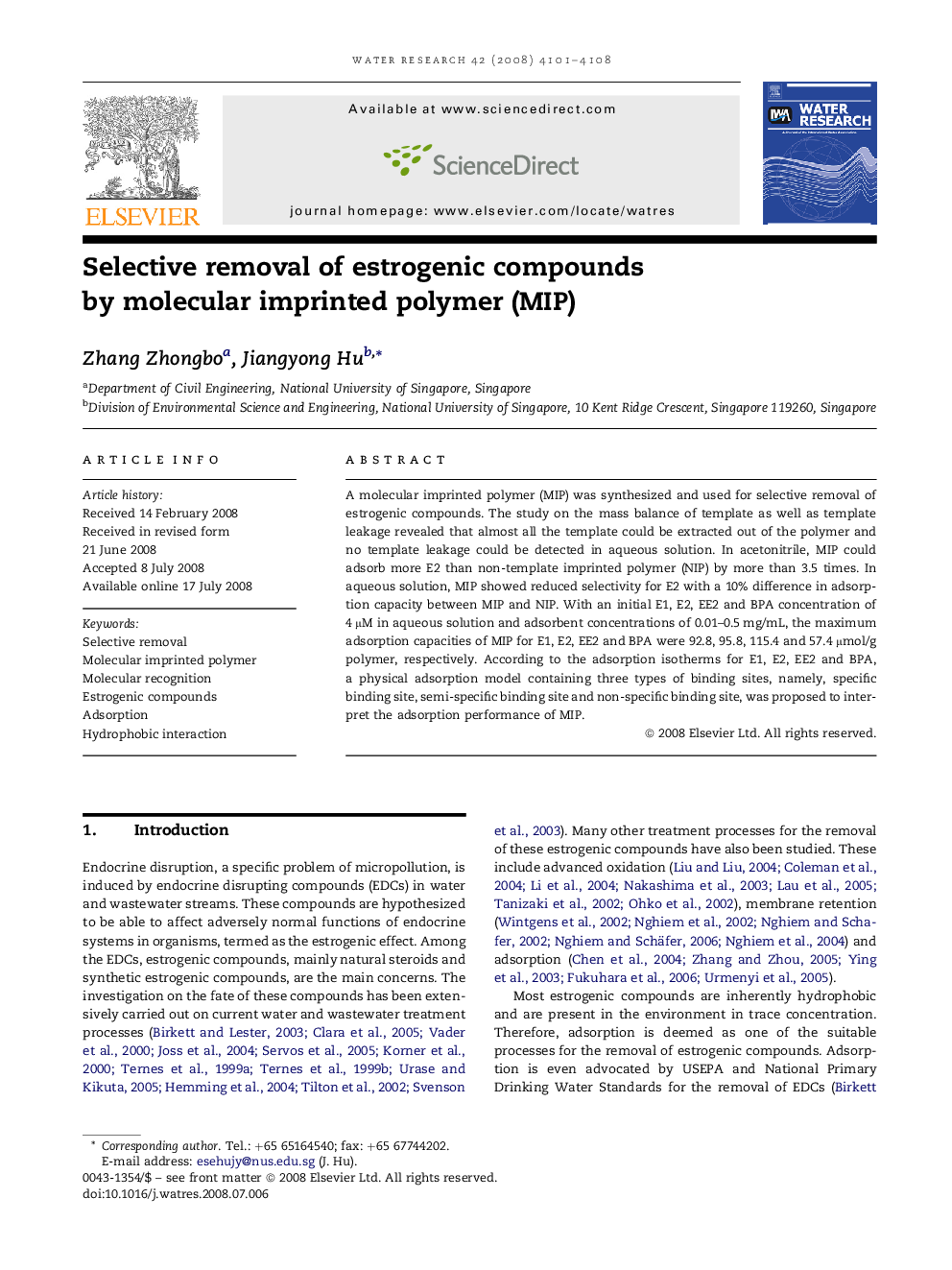| Article ID | Journal | Published Year | Pages | File Type |
|---|---|---|---|---|
| 4484808 | Water Research | 2008 | 8 Pages |
A molecular imprinted polymer (MIP) was synthesized and used for selective removal of estrogenic compounds. The study on the mass balance of template as well as template leakage revealed that almost all the template could be extracted out of the polymer and no template leakage could be detected in aqueous solution. In acetonitrile, MIP could adsorb more E2 than non-template imprinted polymer (NIP) by more than 3.5 times. In aqueous solution, MIP showed reduced selectivity for E2 with a 10% difference in adsorption capacity between MIP and NIP. With an initial E1, E2, EE2 and BPA concentration of 4 μM in aqueous solution and adsorbent concentrations of 0.01–0.5 mg/mL, the maximum adsorption capacities of MIP for E1, E2, EE2 and BPA were 92.8, 95.8, 115.4 and 57.4 μmol/g polymer, respectively. According to the adsorption isotherms for E1, E2, EE2 and BPA, a physical adsorption model containing three types of binding sites, namely, specific binding site, semi-specific binding site and non-specific binding site, was proposed to interpret the adsorption performance of MIP.
